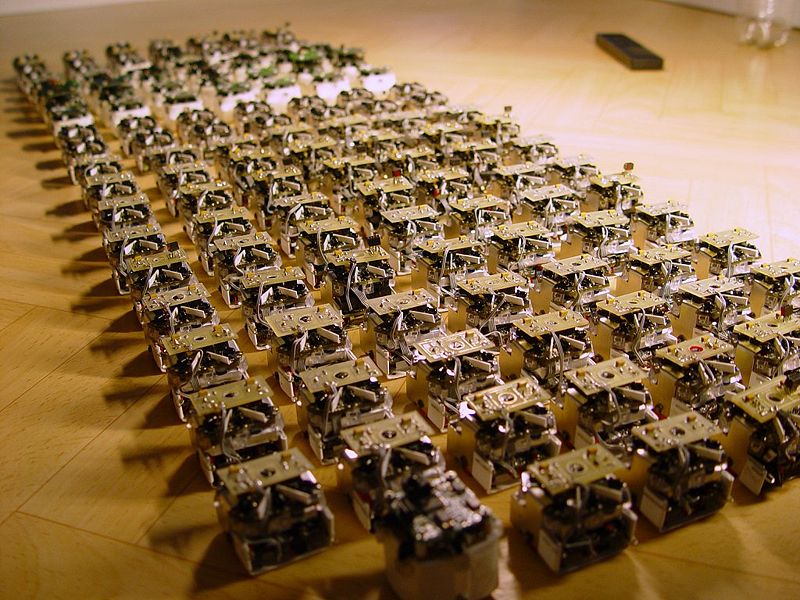Cloud robotics version DARPA
Disclaimer
This text is a free retelling of the article of the popular magazine Scientific American for 2003. Most of the technical details were not considered to the extent that they are reflected in the original article.
Army of small robots
In 1998, DARPA presented a script to robot developers, in which a team of small robots helped SWAT to destroy terrorists. The task was to create small mechanisms, compact enough for manual transportation to the place of application.
A well-coordinated group of small robots has countless advantages over its large counterparts. They can wade through pipes, hide in niches and exchange information gathered from different points of view. If one of them fails his part of the task, the overall mission is likely to not be failed. But despite all their advantages, they cannot carry all the necessary equipment themselves: often even a video camera can cause overload. Such robots are like ants: weak and unprotected by themselves, but extremely effective in joint actions.
')

Perhaps the most serious of the restrictions is energy. Batteries do not scale very well: with a decrease in size, at some point they reach a threshold, after which they are not able to provide enough power to move their weight. A small robot is always a compromise: weight, size and cost are opposed to speed, battery life and functionality.
The size of the machines requires close intra-group interaction for many reasons. Large machines can use GPS and visual recognition of the landscape to determine their location, which is inaccessible to smaller machines. To partially solve this problem, engineers proposed a new technology - determining the distance between the robots of the group for measuring the delay between the sound signal and the radio signal. The advantage of this method is that robots do not need to fix known points on the ground for orientation in space. They can get into the new environment and explore it on their own using the relative coordinate system.
Obstacles are another important reason for joining forces. Dimensions make them overcome problems that are invisible to the average person, such as stairs or curbs. To overcome these limitations, engineers proposed the idea of robots connecting together. The chain can lift its front end to an obstacle, and then tighten the back. At the moment, this process should be completely controlled by man, but soon the creators promise to automate it.
One of the mechanisms for managing autonomous groups of machines is hierarchy. The robots are divided into small teams headed by a large command machine capable of transporting all the necessary equipment and small robots and performing complex calculations at the same time. The idea is that the command machines will be able to send small scouts to inaccessible places, and then analyze the received information using large computing powers.
Unfortunately, such small robots are still far from widespread use. Despite their high potential, the current realized opportunities put them in the place of mobile phones where they were twenty years ago.
Source: https://habr.com/ru/post/137053/
All Articles